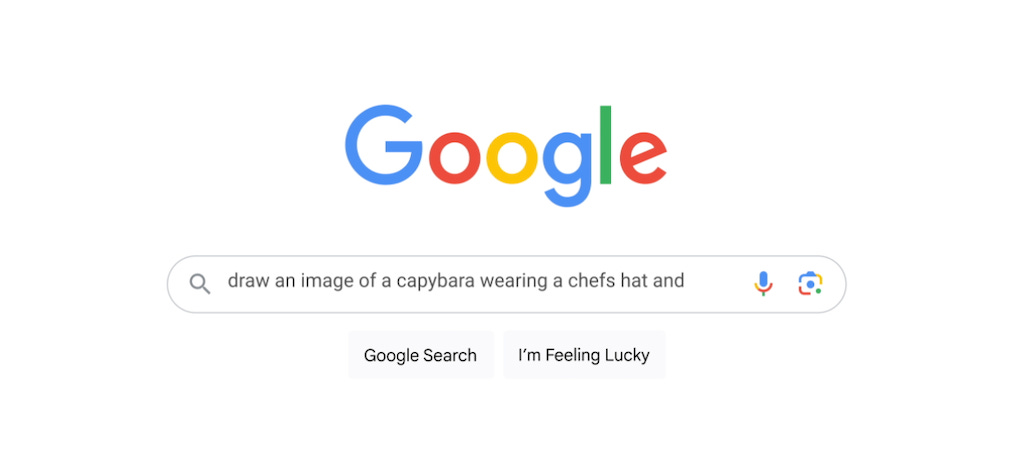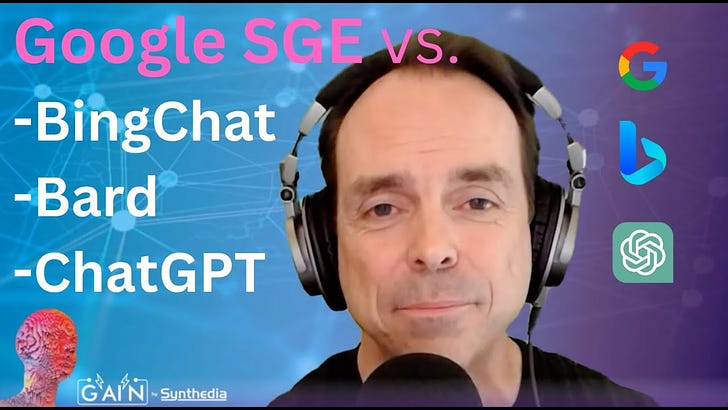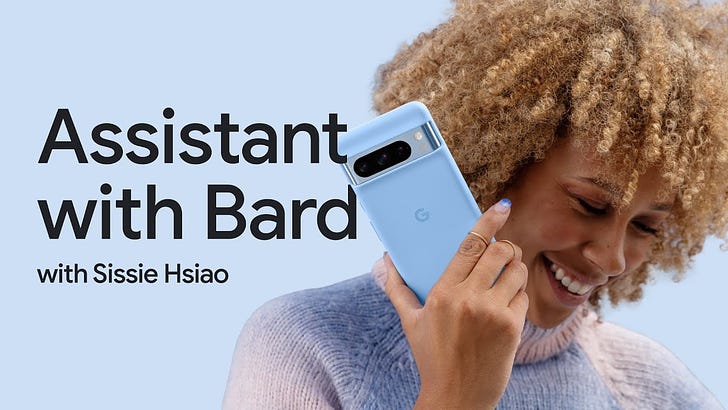Google Search Generative Experience will Create Images and Provide Writing Assistance. Is This Bard?
How will Google users choose among its many overlapping solutions?
Google is updating its Search Generative Experience (SGE) to include AI-powered image generation and writing assistance. The features join existing generative AI-enabled answer summaries in search results and webpage summaries while browsing. Microsoft already offers image generation through Bing Create, and writing assistance in Bing Chat. So, you could say this is Google Search leveling up to competitive parity. There is more to this story, but first, let’s consider the announcements.
Images Come to Google SGE
By now, you have probably used DALL-E, Midjourney, Bing Create, Adobe Firefly, or another AI-based text-to-image generator. You go to a dedicated website (or Discord group), describe what you want, and the AI-based diffusion model churns out an image. Google is going to offer this right from your search bar.
Google SGE will produce four images that you can immediately download and edit the description. This may become the lowest friction way to generate an image using AI. It is unclear if Google intends to charge for this or put some limits on use. Bing Create has a fairly generous limit on free use that restocks each month. Google could defray the image generation cost by showing ads alongside the output.
Image generation will also be integrated into Google image search. When viewing a grid of images in a search, Google will insert a tile that enables you to “create something new.” That will take the user directly to the image generation prompt.
This is a useful integration. It is perfectly within the context of image search. If you are looking for an image and cannot find the right fit, Google will make it easy to create one to your specifications. In addition, Google says it will soon offer image inspection.
We also have an upcoming tool called About this image that will help people easily assess the context and credibility of images. For example, it might show you when a similar version of this image may have first been seen by Google; or show you other pages on the web that use a similar image, including news or fact checking sites.
While image generation is nothing new, and ChatGPT can now do image generation and evaluation, inspecting the image for additional information will be useful. Understanding where the image first appeared and how widely it is published is not a feature that I have seen mentioned elsewhere.
Google first introduced this concept in a May blog post, saying it would arrive later this year. It looks like SGE may be the first place it surfaces, and that makes sense. Google search is about getting more information about things, and you encounter a lot of images while searching.
Bard can evaluate images but does not provide source data or its origin on the web. This would seem to be an obvious feature to add.
Google SGE for Writing Assistance
A feature that Bard already has today is writing assistance. For some reason, Google believes users will need this as part of their search experience as well. According to the Google blog post:
Sometimes when you’re researching a project or topic in Search, you end up looking for writing ideas and inspiration along the way. To help with these longer-running searches, we’re introducing written drafts in SGE. You’ll be able to make the draft shorter, or change the tone to be more casual.
For example, perhaps you’re looking into home improvement projects, like how to convert your garage into a home office. After finding helpful ideas across the web and contractors you’d like to get in touch with, you can ask SGE to “Write a note to a contractor asking for a quote to turn my garage into a home office.”
From there, it's easy to export your draft to Google Docs or Gmail when you’re ready to add that personal touch.
It is unclear whether users will make the behavioral shift to using search for drafting emails, notes, and other written text. However, it is an interesting strategic move.
Google is dominant in search. Web search is an essential element of research. Google wants to keep you in the Google ecosystem and not flitting off to ChatGPT or Jasper [or Bard??] to start your writing. You just gathered some information, so why not have Google contextualize it for you in a draft and then automatically export it to Docs or Gmail?
This seems entirely logical, and I suppose it is worth a shot. With that said new behaviors do not always follow simple logic. Sometimes, it is because other reasons support an existing behavior. Other times, it is because existing behavior and expectations have inertia that is hard to overcome. Will consumers reorient their expectations of search to include writing?
What About Bard?
It is not a problem that Google is adding these features to SGE, but, strangely, image creation is arriving in search before Bard. ChatGPT is Bard’s main competitor and has image generation today for Plus users. Bard should have image generation to maintain competitive parity with its rivals.
Google is developing several AI assistants. Google Assistant is a general-purpose assistant available on mobile and through smart home devices. Duet AI is the generative AI-powered assistant for Google Workspace applications. SGE is Google’s version of bolting generative AI features onto its most dominant product. Bard is a general-purpose chat assistant for research and content creation.
So, there are two general-purpose assistants and two product-based assistants, with more product-based assistants coming for YouTube, Ads, and other services. This may be confusing. It also may make it harder for Google to get users to try any single version. If I sometimes use Google SGE and other times use Bard, do I have any loyalty to a single solution I’m investing in and forming habits around?
Microsoft has a similar quandary. Microsoft Copilot for Windows is flanked by Microsoft 365 Copilot for its productivity applications and the general-purpose Bing Chat for search, summarization, text generation, and more. By contrast, Perplexity has a single solution that is designed for search and a few other use cases. OpenAI has ChatGPT for everything.
Sometimes, offering too many choices results in no choice being made. I suspect the companies that focus on a single app, or more clearly demarcate between a single general-purpose creation and knowledge solution from the generative AI features in other applications, will have more success in building user loyalty.
Google SGE is Limited Access
If you want to try out Google SGE, you have to sign up through Google Search Labs. It will not work with a corporate Google Workspace Gmail account, but will with a personal account. The logic behind this is unclear, but free users get access, and paid user accounts do not for now.
I recommend you try it out to see how it differs from Bing Chat, Perplexity, and ChatGPT search. Instead of reimagining the search experience, Google has maintained the search framework you are accustomed to and added the generative summaries at the top, similar to where you might find a search Answer Box.
In addition, there is a feature that will summarize web pages. It resembles what you see in Microsoft’s Edge browser and Opera. Instead of reading the page you land on, you can see SGE’s view on the website and related topics and searches. This feature may transform web browsing and website creation.
What do you think? Are you excited about Google SGE’s new features? Will you try them? Let me know in the comments below.







